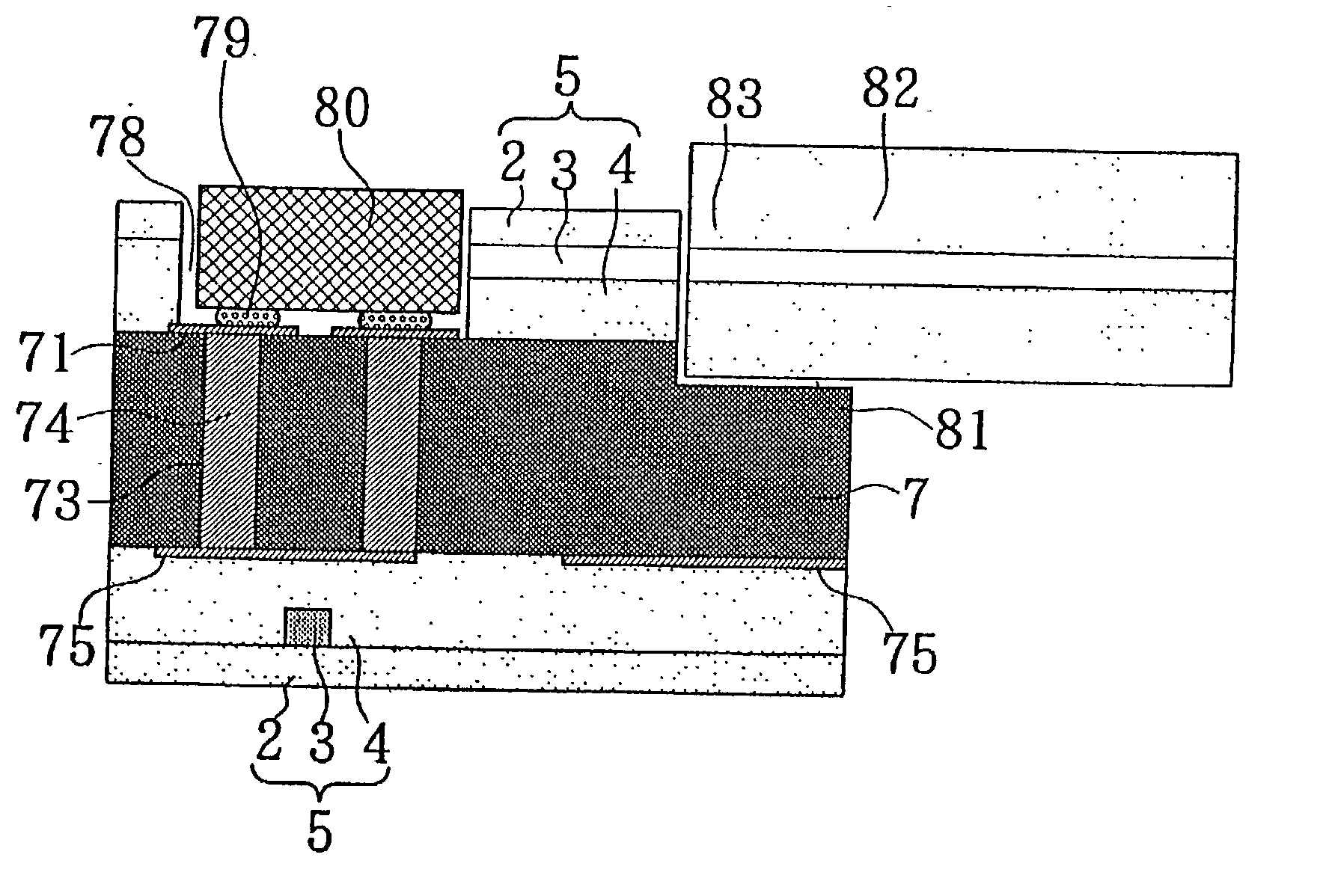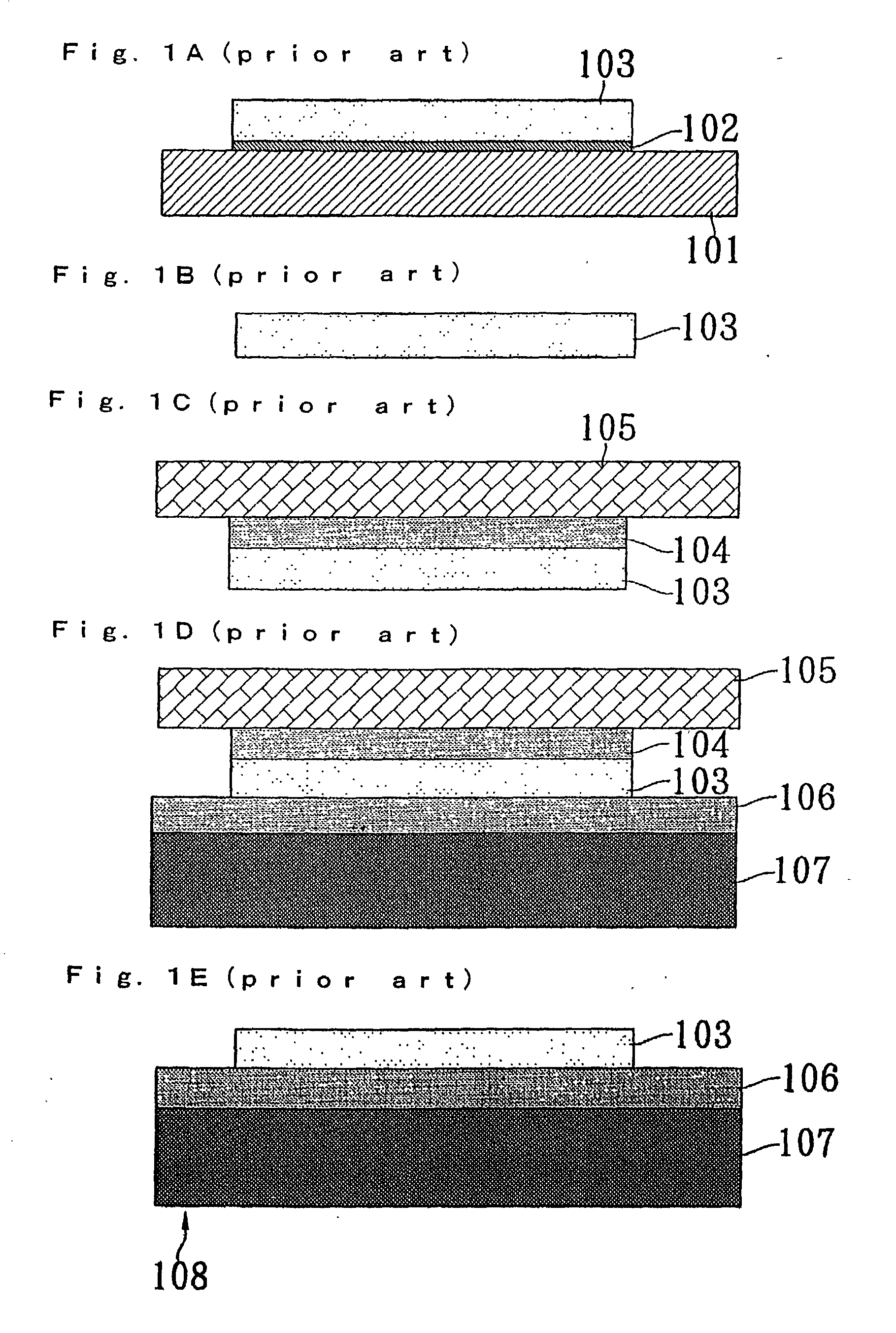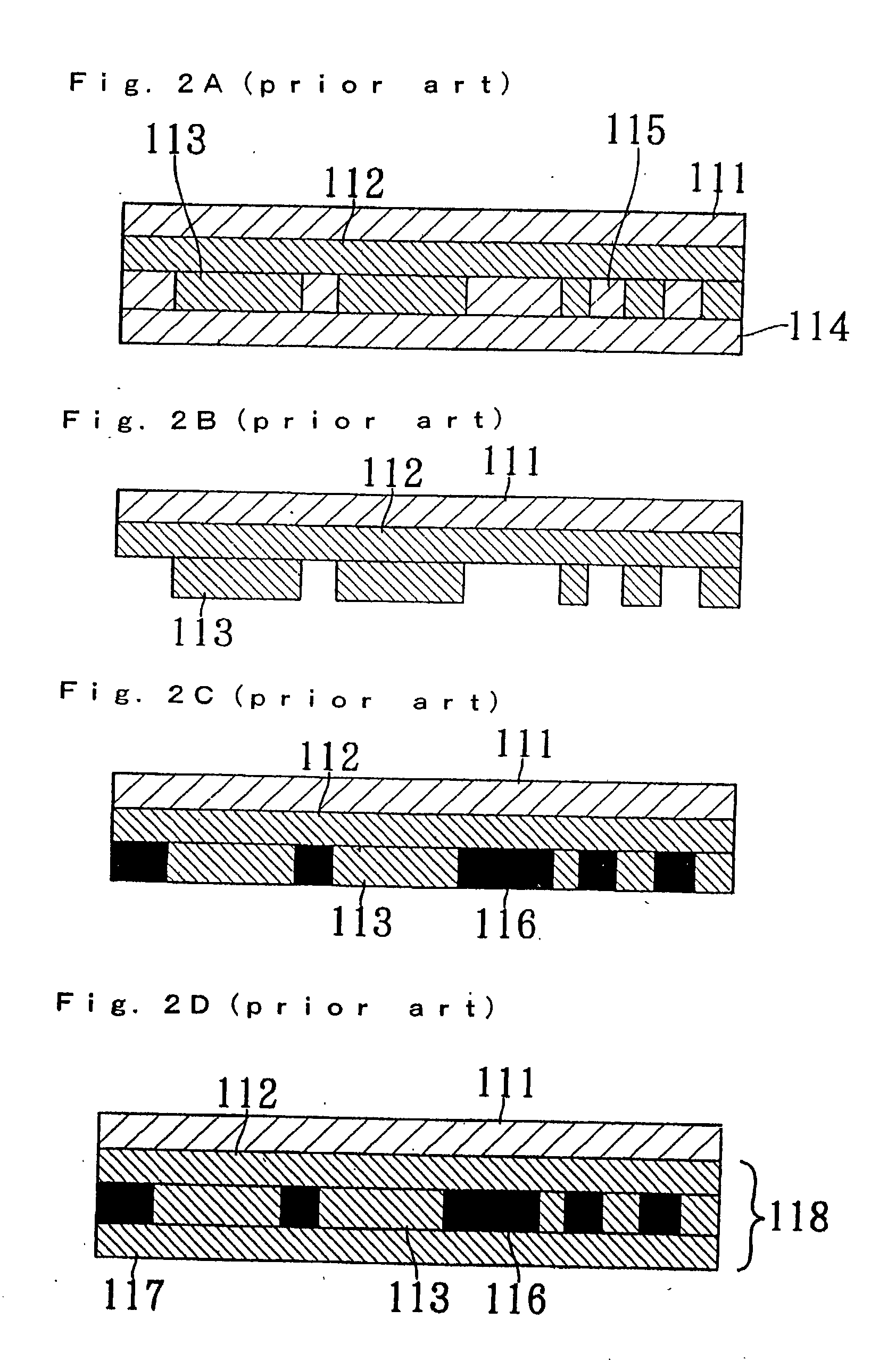Method of manufacturing optical waveguide and method of manufacturing OPTO-electric wiring board
a manufacturing method and technology of optical waveguide, applied in the field of manufacturing optical waveguide and manufacturing opto-electric wiring boards, can solve the problems of delaying electric signals, affecting the placement of other electronic devices, and affecting the performance of electronic devices, so as to reduce the time required and eliminate the stress remaining in the optical waveguide
- Summary
- Abstract
- Description
- Claims
- Application Information
AI Technical Summary
Benefits of technology
Problems solved by technology
Method used
Image
Examples
first embodiment
[0041] (First Embodiment)
[0042] FIGS. 3A to 3I are cross-sectional views illustrating a sequence of steps, one by one, in a first embodiment of a method of manufacturing an opto-electric wiring board according to the present invention. In the following, the method of manufacturing an opto-electric wiring board according to the first embodiment will be described with reference to FIGS. 3A to 3I.
[0043] In the first embodiment, a thermoplastic polycarbonate resin having a molecular weight in a range of 10,000 to 20,000 is used to form a supporting substrate 1 which is approximately 1 mm thick and in the shape of a square having one side of approximately 300 mm (see FIG. 3A). After an optical waveguide substrate including supporting substrate 1 is adhered to an electric wiring board, later described, supporting substrate 1 is dissolved using an organic solvent such as methylenechloride, tetrachloroethene, chloroform, 1,1,2-trichloroethane, chlorobenzene, dioxane, or the like.
[0044] When...
second embodiment
[0062] (Second Embodiment)
[0063] FIGS. 4A to 4F are cross-sectional views illustrating a sequence of steps, one by one, in a second embodiment of a method of manufacturing an opto-electric wiring board according to the present invention.
[0064] The method of manufacturing an opto-electric wiring board according to the second embodiment differs from the first embodiment in that the former employs a supporting substrate which has a higher heat distortion temperature.
[0065] In the following, the method of manufacturing an opto-electric wiring board according to the second embodiment will be described with reference to FIGS. 4A to 4F.
[0066] In the second embodiment, a thermoplastic polyphenylene sulfide (PPS) resin is used to form supporting substrate 11 which is approximately 1 mm thick and in the shape of a square having one side of approximately 300 mm (see FIG. 4A). The PPS resin is a crystalline polymer which exhibits a heat distortion temperature of approximately 260.degree. C. nea...
third embodiment
[0083] (Third Embodiment)
[0084] FIGS. 5A to 5H are cross-sectional views illustrating a sequence of steps, one by one, in a third embodiment of a method of manufacturing an opto-electric wiring board according to the present invention.
[0085] The method of manufacturing an opto-electric wiring board according to the third embodiment differs from the first embodiment in that electric wires routed on the opto-electric wiring board have a certain degree of freedom.
[0086] In the following, the method of manufacturing an opto-electric wiring board according to the third embodiment will be described with reference to FIGS. 5A to 5H.
[0087] In the third embodiment, first, optical waveguide 25 having core layer 23 between lower cladding layer 22 and upper cladding layer 24 is formed on supporting substrate 21 through steps similar to those in the first embodiment illustrated in FIGS. 3A to 3D to complete optical waveguide substrate 26 illustrated in FIG. 5A. This optical waveguide substrate 2...
PUM
 Login to View More
Login to View More Abstract
Description
Claims
Application Information
 Login to View More
Login to View More - R&D
- Intellectual Property
- Life Sciences
- Materials
- Tech Scout
- Unparalleled Data Quality
- Higher Quality Content
- 60% Fewer Hallucinations
Browse by: Latest US Patents, China's latest patents, Technical Efficacy Thesaurus, Application Domain, Technology Topic, Popular Technical Reports.
© 2025 PatSnap. All rights reserved.Legal|Privacy policy|Modern Slavery Act Transparency Statement|Sitemap|About US| Contact US: help@patsnap.com



